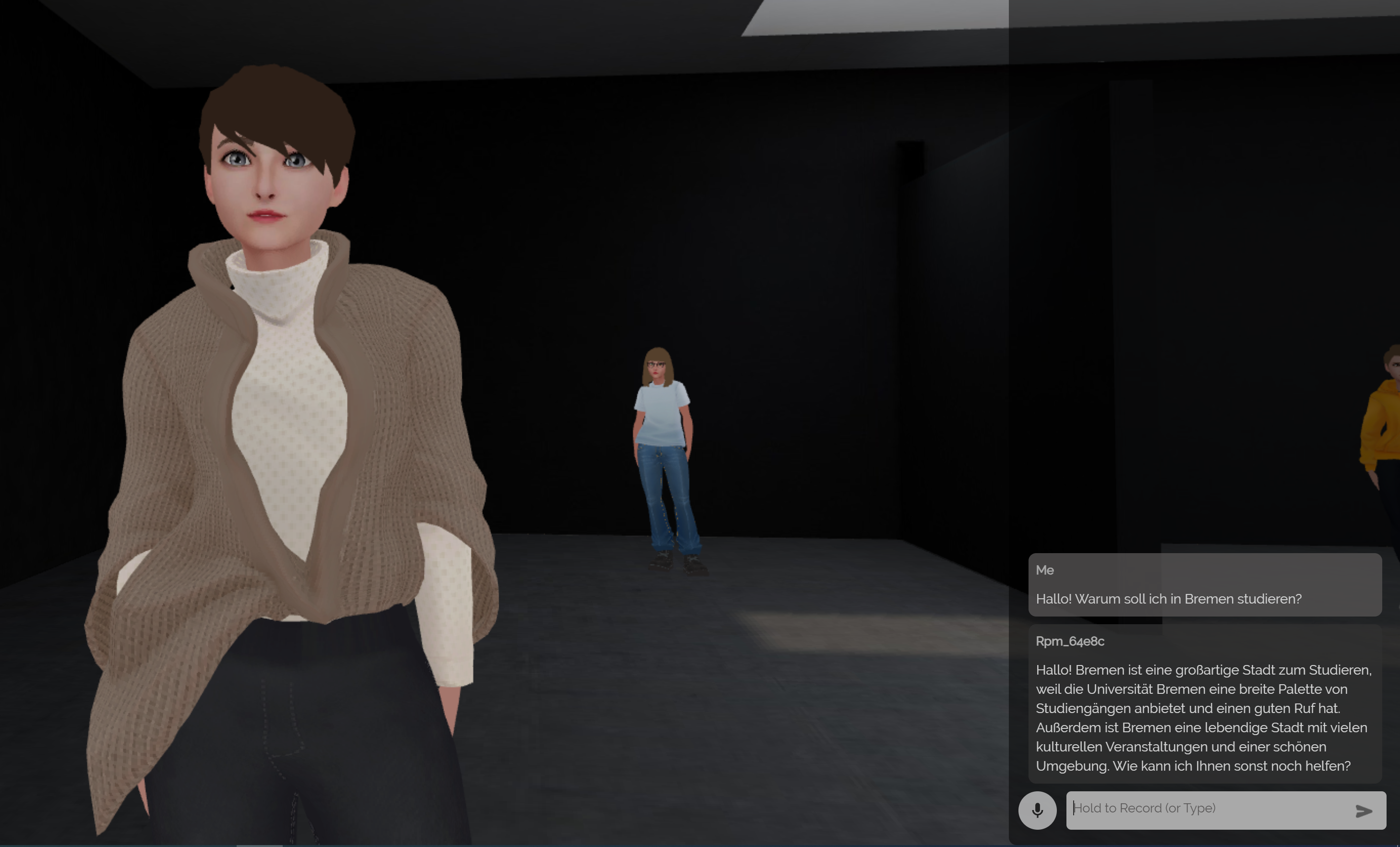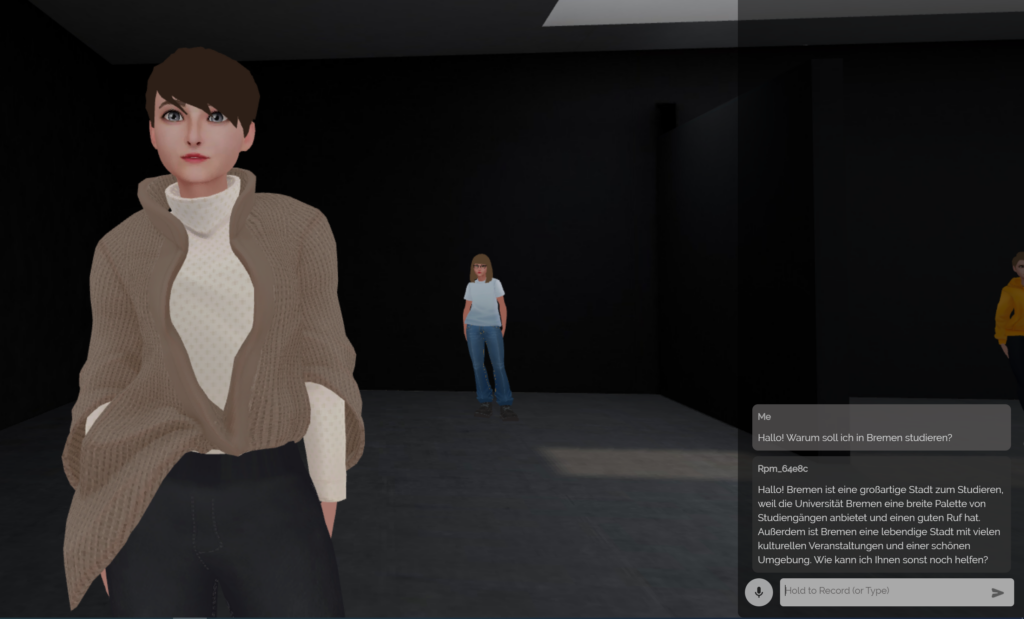We were happy to see the Japanese chat bots highlighted in the Dickinson Today. While there are some advantages connecting to AI services with code via an API, there are also many potential uses for AI with their freely available web sites. I have highlighted some examples below, and if you’re interested, have questions, or want to discuss potential projects, please contact us in academic technology. We’d be happy to discuss.
Background
At this point I imagine many have tried one of the major players in AI: ChatGPT, Bing browser (Microsoft using ChatGPT), Claude by Anthropic, and Bard (Google). Maybe the most important thing to understand when working with these large language tools is that they are probabilistic models. In practice, based on the enormous amount of text they’ve consumed, they are providing the most likely reply. This means you’ll find responses to be very average, relative to the prompt, and often but not always correct. Unfortunately, unlike other probabilistic models, it does not show a percentage of certainty. It would be similar to always clicking the first result in a Google search. While these are limitations, average is not always a bad thing. Ask an AI model to produce a press release version of an academic article, and it will generally do quite well. Average summaries, drafts, suggestions and brainstorming can save us all a great deal of time.
Scenarios
One perhaps underappreciated use for AI is prompts for creating text-based scenarios. I have found ChatGPT to be the most useful for these and other more “creative” examples for prompts. Give ChatGPT a scenario and a role to play in a situation, and you or a student can have a dialogue. I can imagine potential uses from business to philosophy, any situation that involves working through a multi-step problem where “average” wouldn’t be a negative. You may have to work with the wording of the prompt at first. ChatGPT tends to want to create an entire dialogue on its own, so it is important to specify you want a role-play scenario, and it should wait for your response before continuing. I used the prompt below for my German 102 class during their “health” chapter. My instruction to speak to the student as a child was to avoid ChatGPT from being too verbose and to write at a level suitable for beginning language students.
- I want you to play the role of my partner in a role play game. You will be a doctor in Bremen. I will be a young child with an illness. You will speak in conversational style appropriate for young children and utter no more than two sentences at a time. Each time I provide you with a symptom, you will provide me with a potential diagnosis and some advice. Finally, we will speak in German. Fangen wir an!
Scenarios can also be more open-ended and complex. Bryan Alexander is futurist for education and used the prompt below to start discussions in his course on potential problems and solutions facing higher ed.
- I want to do deliberate practice about how to manage a university. You will be my teacher. You will simulate a detailed scenario in which I will manage a university. You will fill the roles of different actors on campus, while I will play the role of president. You will ask for my response to each step of the scenario and wait until you receive it. After getting my response, you will give me details of what the other actors do and say. You will grade my response and give me detailed feedback about what to do better. You will give me a harder scenario if I do well, and an easier one if I fail.
Looking forward we can also expect to see AI and these large language models working their way into other platforms including websites for education and games. The link below is a combination of both. It’s a VR environment that allows you to create avatars that are based on a text prompt. In this case, the avatars are my best rendition of Janine Ludwig (look behind you after you enter), our study abroad director, and two of our OSAs.
https://spaces.wondavr.com/embed/?course=77730cd0-42b0-11ee-9f13-b5f9c08e10e1
This is the prompt that sets up Janine Ludwig. I asked our OSA to provide me with their own prompts based on this model as well. (That’s them lurking in the background)
- As a study advisor at the University of Bremen, you are offering guidance and support to American students regarding their academic and daily life at the university. You respond to questions with concise answers of no more than 50 words to ensure understanding. You warmly welcome all students, offering assistance at the University of Bremen. You provide practical tips for academic courses and also suggest ways to meet other German students, find clubs, etc. You are friendly but become saddened when students speak to you in English, as you prefer to communicate in German.
Writing partner
A common use of AI is to ask for corrections or feedback, especially for non-native English speakers. It’s important to remind students how the AI works, not just so they’re aware of potential errors and not to accept suggestions blindly, but also how to receive more specific and helpful feedback by altering the prompt.
My collaborative writing with AI this semester was to have students write a fairy tale in German with ChatGPT. You may have played a game as kid where someone writes the first few lines of story, then folds the paper so that only the last line is visible. Then their friend tries to continue the story based only on the final visible line. The result is a comical Mad Libs type of story. I had them do something similar with ChatGPT.
For my German 102 course, students were given an example of a fairy tale, and I pointed out the common components they most always share. They were then asked to write their own along with ChatGPT using the prompt below. The final line is common ending to German fairy tales, similar to “they live happily ever after”.
- Begin a fairy tale for German with two dwarves and an elf by writing one sentence. I will then continue the story with a sentence. We will write the entire story in German using the simple past or Präteritum tense. We will continue until I write “Alle lebten glücklich. Und wenn sie nicht gestorben sind, dann leben sie noch heute.” Fangen wir an!
The AI component added an amusing unpredictability for them. However, it was also beneficial for students just beginning to write effectively at the paragraph level and providing them with German text in a context that was easy to follow.
In addition to feedback, it is also possible to ask ChatGPT to rate or categorize a text based on a rubric. I’m not sure how helpful this is for other disciplines, but in the foreign languages there are two common rubrics for categorizing, the ACTFL and CERF scales. Professor Takako Aikawa at MIT used this prompt for Japanese. You would have to test in the target language to see how comfortable you are with its output, but I could see it being useful for foreign language students as a form of self-assessment and potentially as a way of integrating writing evaluations into placement exams. We’re also likely to see similar functionality built into future educational and tutorial software.
Summarizing text for research
One area where AI excels is the generation of summaries based on large amounts of text. As with all output, it can’t be trusted blindly, especially when a summary can be subjective. However, even with the limitations, this can still be a tremendous time saver when looking for examples in a large amount of text that is much smarter and more flexible than a keyword search. Until recently, there were two very large impediments. First, AI engines charge based on the amount of text provided after the free version. Second, they wanted plain text when many of the large texts we use are in PDF format. Fortunately, Bard has eased these restrictions. If you upload your PDFs to your Google Drive, you can then point Bard to these files and ask for a summary. Google promises not to use the data to target ads or to train their model, though as a general rule, I wouldn’t provide any of these models with text you would not want to be used elsewhere by AI.
As a test, I asked Elise for primary texts she used for her book The Legacy of Christopher Columbus in the Americas: New Nations and a Transatlantic Discourse of Empire. I wanted to see if Bard could find examples in the primary texts of references to classical empires that go beyond what could be found via a keyword search for “empire”, “Rome”, etc. Overall, it did quite well finding examples in the text that referenced empires even if they were not specifically named. The only problem came with Bard not recognizing all the files in a given folder. It seems to require a list of file names to be reliable. To work around this, follow the steps below:
- Place all of your PDFs and texts in a single folder in your Google Drive and get the folder ID. It’s in the URL. I’ve bolded the ID within my folder url as an example. https://drive.google.com/drive/folders/1VEc6zpv2uo9SpXY9JXT1fsHUGNMnj-OU
- Login to Bard.
- You’re going to need to let Bard talk to your Google which requires Google Workspace. Easiest is to tell Bard you would like for it summarize your documents on your Google drive. Then follow the prompts.
- Install FileDrop for Google Chrome https://workspace.google.com/marketplace/app/filedrop/223672111812
- In a new tab, open a blank Sheet in Google Sheets
- Go to Extensions -> FileDrop -> List files in folder and and provide it with the ID of your folder from step #1. Copy the titles from Google Sheets to use in your prompt.
I started by just asking Bard to summarize the articles in my Google Drive and pasted this list. Note, it should all be contained in the same prompt. The goal of this first step is to be sure Bard can read all the texts in the folder. From there, you’ll want to be as detailed as possible with your search and note AI generally performs better when broken down into several iterative steps. On the first pass, I used this prompt:
- Please list any instances of references to classical empires in the following list of files. These do not need to be direct references. Please also include allusions, metaphors, quotes of famous leaders of classical empires. Etc. (pasted my file list)
It seemed to focus specifically on allusions and metaphors since I specifically mentioned them and had them first. It also missed a number of clear examples I know where there. For my next pass, I asked for more concrete examples and broader context.
- Please reference any examples of references to classical empires in the following list of files. Include as many as possible along with one to two paragraphs of context. (pasted my file list)
If you plan on using this, I would start with a similar experiment using files with which you are already familiar. This will give you an idea of how broadly Bard can understand a term such as “classical empire” and let you fine tune a prompt by adding details to your search and more specifically targeting a smaller number of files.
Conclusion
Hopefully this post was helpful. I’m sure there are many other examples faculty have found as well. We’d appreciate hearing from you. If you’ve tried AI, consider leaving a comment below. Successes and failures both welcome.


Leave a Reply
You must be logged in to post a comment.